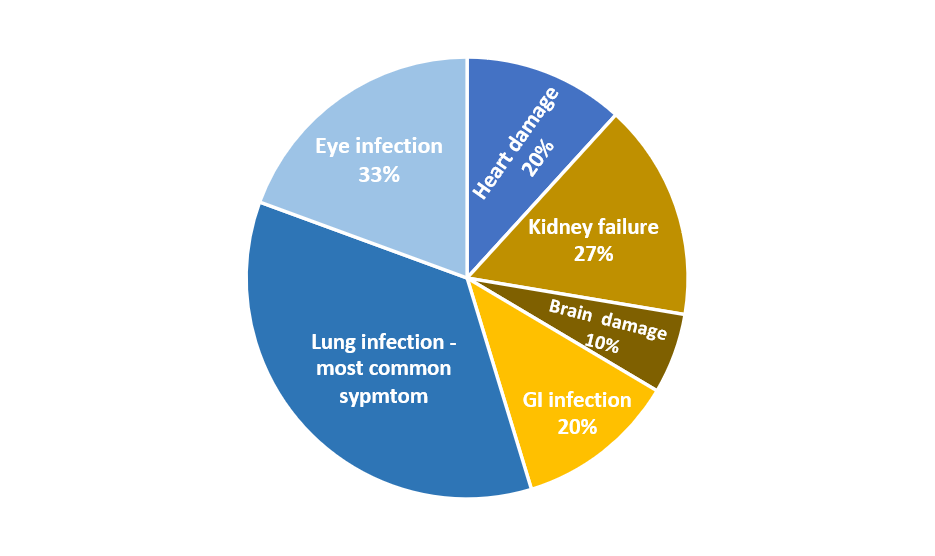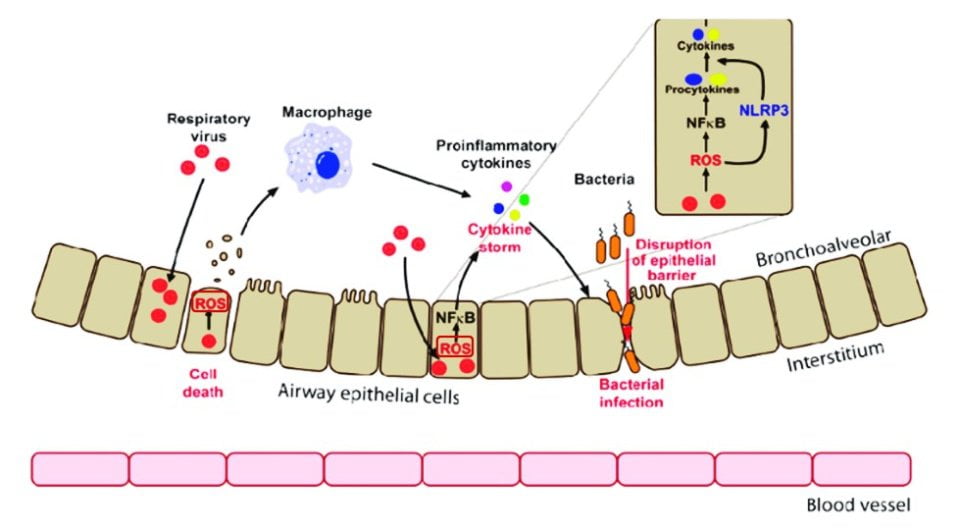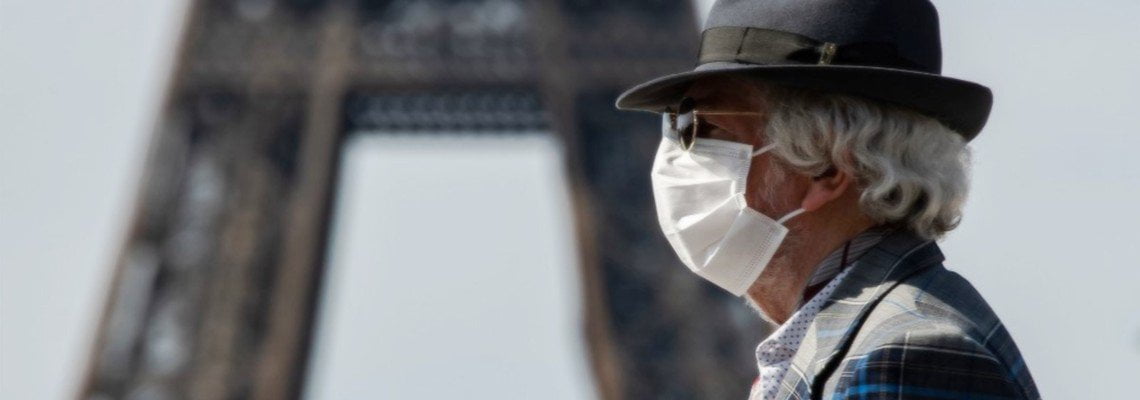Until now, there are close to 5 million confirmed COVID-19 cases world-wide that so far led to more than 316,000 deaths. Clinicians and pathologists are trying to understand the damage caused by COVID-19 as the virus spreads through the body. The damage is not limited only to lungs but many other organs and tissues in the body can be seriously affected too.
“This disease can attack almost anything in the body with devastating consequences,” says cardiologist Harlan Krumholz of Yale University and Yale-New Haven Hospital, who is leading multiple efforts to gather clinical data on COVID-19. “Its ferocity is breath-taking and humbling.”

THE INFECTION BEGINS
When a person inhales virus-carrying droplet exhaled by an infected person, the novel coronavirus enters their nose and throat. It finds a new home in the lining of the nose. The virus requires a receptor,called angiotensin-converting enzyme 2 (ACE2), to enter our cells. Throughout our body, the presence of ACE2 receptor, which normally helps regulate blood pressure, marks tissues vulnerable to infection of COVID-19.
If our immune system does not stop COVID-19 during this initial phase, the virus then moves down the windpipe to further attack the lungs and other organs with abundance of ACE2 receptors.
Which cells have many ACE2 receptors?
1. The thinner, distant branches of the lung’s respiratory tree end in tiny air sacs called alveoli, each lined by a single layer of cells
2. The lining of the heart and blood vessels
3. Kidney tissues
4. Neural cortex and brain stem cells
5. The lining of the lower digestive tract
AN INVADER’S IMPACT
In serious cases, COVID-19 invades the lung and causes serious damage there. But the virus, or the body’s response to it, can injure many other organs too.

➭ COVID-19 infection leads to the enhanced ROS (Reactive Oxygen Species) production
➭ Enhanced ROS may trigger cell death and subsequent macrophage activation
➭ This activation is accompanied by cytokine storm* (via NFκB and NLRP3)
➭ Cytokine storm leads to the inflammation and destruction of epithelial cell contacts (immune system over-reaction)
* Cytokines are chemical signalling molecules that guide a healthy immune response; but in a cytokine storm, levels of certain cytokines soar far beyond what is needed, and immune cells start to attack healthy tissues. Blood vessels leak, blood pressure drops, and blood clots form causing catastrophic organ failure.
HIGH-RISK GROUP
“The more we look, the more likely it becomes that blood clots are a major player in the disease severity and mortality from COVID-19.”
Behnood Bikdeli, Columbia University Irving Medical Center
If COVID-19 targets blood vessels, that could also help explain why patients with pre-existing damage to those vessels, for example from diabetes and high blood pressure, face higher risk of serious disease.
Recent Centres for Disease Control and Prevention (CDC) data on hospitalized patients in 14 U.S. states found that about one-third of these patients had chronic lung disease but nearly as many had diabetes, and a half of all hospitalized patients had pre-existing high blood pressure. The research so far clearly shows that the major risk factors are closely linked to vascular system: diabetes, obesity, age, and hypertension.
Reference: ScienceMag.org https://www.sciencemag.org/news/2020/04/how-does-coronavirus-kill-clinicians-trace-ferocious-rampage-through-body-brain-toes#
Govita fights COVID-19 pandemic together with you!

